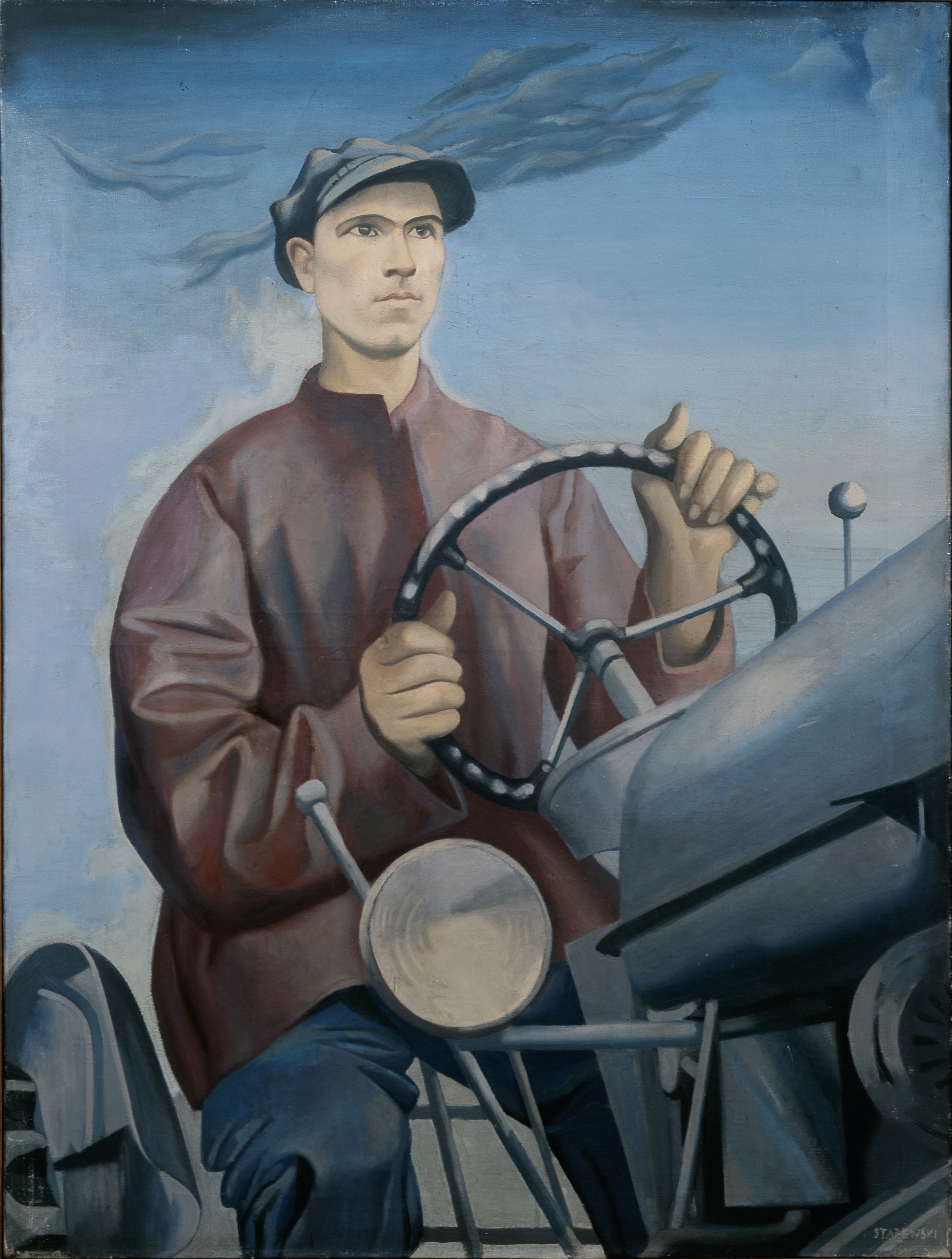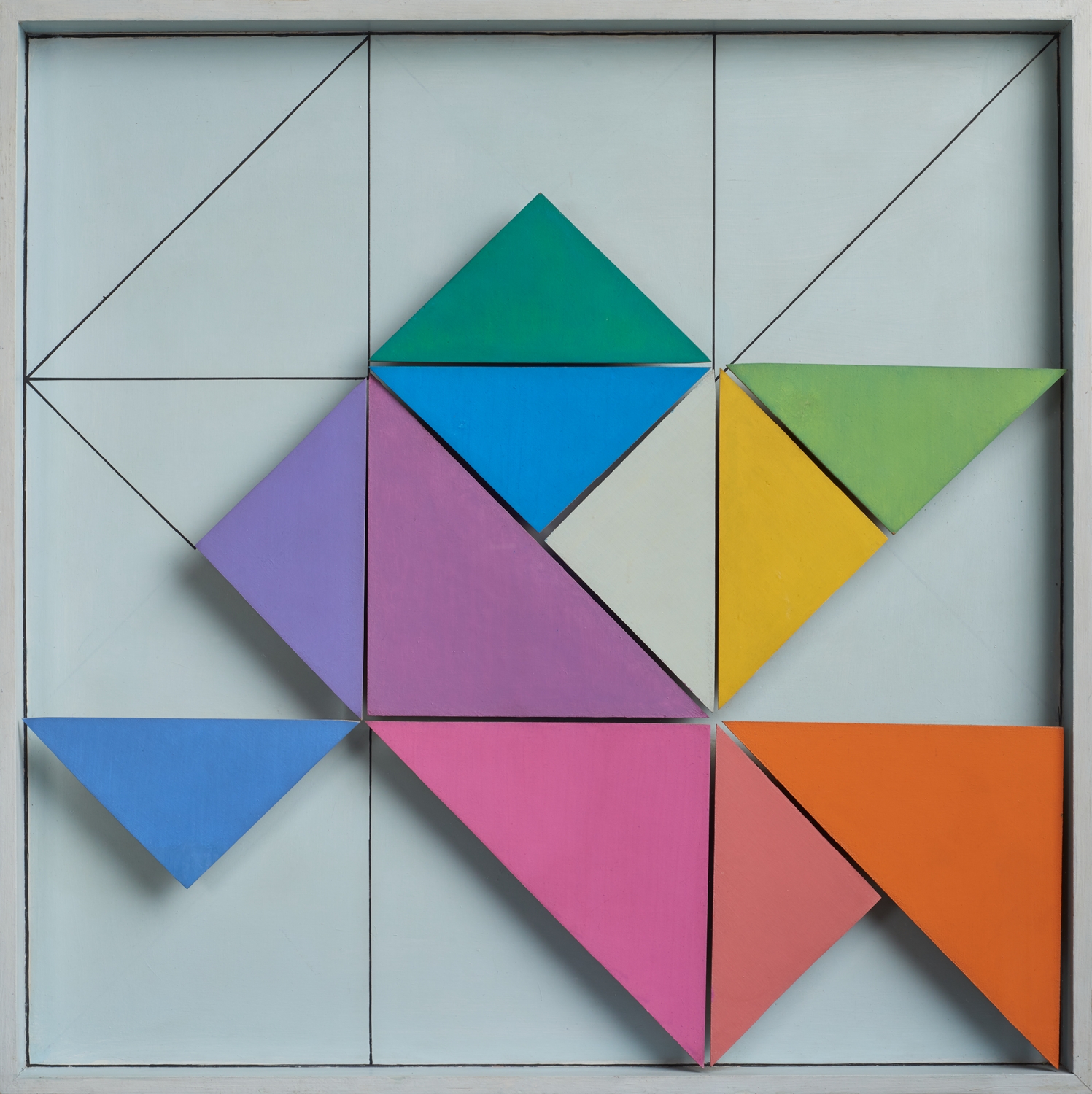Socialist realism is a style of idealized realistic art that was developed in the Soviet Union and was the official style in that country between 1932 and 1988, as well as in other socialist countries after World War II. Socialist realism is characterized by the glorified depiction of communist values, such as the emancipation of the proletariat. Despite its name, the figures in the style are very often highly idealized, especially in sculpture, where it often leans heavily on the conventions of classical sculpture.
In comunist Poland, International Workers' Day was one of the most important days of the year. Today we present Na scalonych ziemiach (On the merged lands), a painting by Polish artist Henryk Stażewski. He is considered to be a pioneer of the classical avant-garde of the 1920s and 1930s but he had a brief romance with socialist realism; in postwar Poland you couldn't avoid it.
The image presents a peasant-worker in a loose shirt and a flat cap, proudly sitting on an rural machine. Shown in an almost close medium, "American" shot that resembles a cowboy conquering the Wild West in a popular western flick, he is wielding the vehicle's steering wheel instead of a firearm in his disproportionately large hands. Interestingly, the land itself, cultivation of which seems to be the ultimate subject, remained outside of its frame. A monumental figure of oval shape, steadily sitting in a king-like pose against the sky, fills the composition's framework. A fulgent halo composed of bright dust thrown by the machine outlines the man's contour. Thus, the machine becomes a mechanised sun-drenched chariot, while the peasant-worker gains divine qualities, illuminating the way to the future.
Szymon Piotr Kubiak
We present today's painting thanks to National Museum in Szczecin.
P.S. Socialist realism golorified work and workers but such depictions existed long before. See the most beautiful depictions of harvest in art!


 Henryk Stażewski
Henryk Stażewski